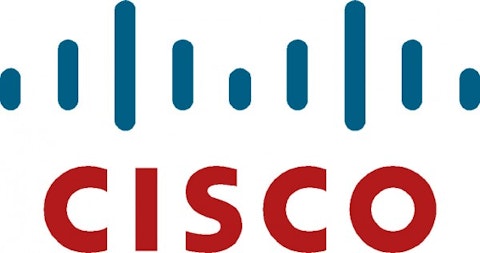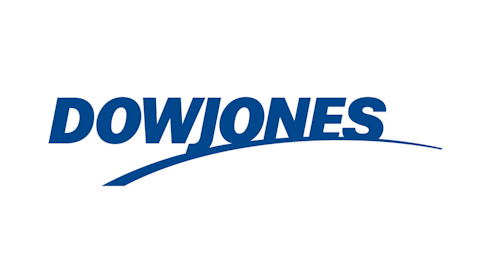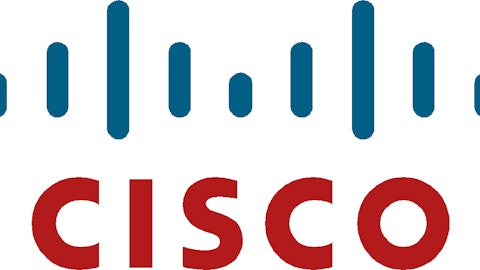The market didn’t like Cisco Systems, Inc. (NASDAQ:CSCO)’s recent results much, but then again the stock is coming off a very strong run. In summary, I thought these results were bullish overall for US corporate IT spending but less so for Cisco. The company has heavy public exposure and it is going to have to weather pressure on the public purse in the US. Meanwhile, the global picture is somewhat mixed and investors need to think carefully about the takeaways from this report.

Cisco Results
For ease of reference there is a preview of the results linked here. Revenues came in better than expected at nearly $12.1 billion, and the guidance was in line with previous estimates.
Starting with the core businesses of Switching, Routing and Services (which make up 69% of total revenues) the numbers came in a bit better than expected, but this was mainly due to good Switching numbers. Growth slowed a bit in Services (reflecting Cisco’s lower growth profile in recent years) and Routing was a bit worse than its usual Q2 decline.
Yearly growth rates here:

Overall the core grew 2.9%, which is incidentally below global GDP. Furthermore, I wouldn’t get too excited with Switching because Cisco guided towards revenues being flat for the next couple of quarters. Even with that forecast the picture is mixed. Switching revenues from the Government are pressured while the corporate sector is doing well. However, since Cisco has heavy government exposure its ability to grow the top line is impaired. Moreover, European enterprise orders in Switching were described as being down double digits. In other words, higher US corporate spending is not enough to bring growth going forward.
The decline in Routing was more than expected, and according to the management reflected the timing of some larger deals and challenges within Europe and China. Again, note how US Enterprise spending is not enough to generate growth here.
Collaboration and SP Video
Collaboration revenues fell a disappointing 11% while Service Provider Video rose 20% but most of this was due to the NDS acquisition. The challenges in Collaboration are coming from TelePresence with its US Federal business cited as a particular area of weakness. Elsewhere, its conferencing revenues were up 11%. I suspect that TelePresence’s weakness is also a function of renewed competition from Polycom Inc (NASDAQ:PLCM), which saw revenues rise five percent sequentially in its last set of results. Polycom has invested in revamping its product portfolio, and the plan was squarely aimed at taking market share from Cisco. It seems to be working.

I think these two divisions highlight a reoccurring theme. Cisco is finding it tough to focus in competition within its peripheral markets and is faced with a lot of macro challenges in its core. However, it has the cash flow and cash pile to make acquisitions in order to generate growth.
Wireless, Security and Data Center
Wireless and Data Center are the strong points of Cisco right now but Security was disappointing. Yearly growth figures here:

Security growth has now crawled to around 1%, and listening to what Fortinet, Inc. (NASDAQ:FTNT), Palo Alto Networks Inc (NYSE:PANW) and Check Point Software Technologies Ltd. (NASDAQ:CHKP) are saying, Cisco is not coming back anytime soon. Fortinet and Palo Alto both cited a number of firewall wins over Cisco. Check Point is going through a platform refresh which may be slowing growth while its new products seem to be giving its customers the opportunity to trade down. My hunch is that Fortinet’s solutions (traditionally more focused at the SMB market) are starting to gain significant traction with larger enterprises. Indeed, Fortinet stated that the number of deals above $500k rose to 27 from 15 last year as discussed here.
Data Center is one of the bright spots for Cisco. Yes, the market is surging with companies like Equinix Inc (NASDAQ:EQIX) expanding revenues rapidly but Cisco also deserves credit for being aggressive and taking an overall architectural approach with its unified data center strategy. I previously argued that Equinix’s spending plans would be a decent proxy for the industry, and although Equinix kept its capital spending plans unchanged for 2013 at $550-650 million, there will surely be upside pressure on this if growth continues at the current 20% rate.
Wireless is another strong area with particular strength seen in Service Provider WiFi which managed to double revenues on a yearly basis. I note that telecoms testing and monitoring company Ixia (NASDAQ:XXIA) also beat estimates recently amidst strong growth numbers, and the increasing proliferation of wifi enabled devices is going to have a symbiotic effect on wifi network spending. Ixia will benefit as large corporations will need to monitor how their networks are performing, and Cisco will benefit from network rollouts.
The Bottom Line
The key takeaways here are that Cisco is still facing challenges from Government spending so investors should look out for that with other companies. Furthermore, some of its peripheral markets are being challenged and I would expect some acquisition activity here. The good news is that US enterprise spending was up 9% and it’s time for investors to start focusing on tech names with exposure here rather than relying on emerging markets or global Government spending.
As for Cisco it remains a value proposition. If you are willing to take a long term view and believe in the acquisition ability of its management than you can do a lot worse than buy the stock.
The article Tech’s Bellwether Signals a Mixed Spending Environment originally appeared on Fool.com and is written by Lee Samaha.
Copyright © 1995 – 2013 The Motley Fool, LLC. All rights reserved. The Motley Fool has a disclosure policy.


